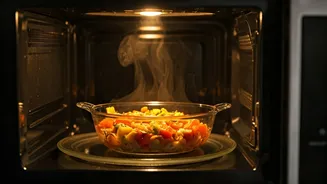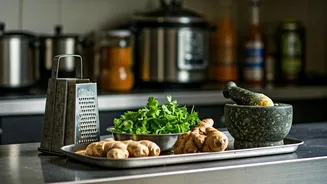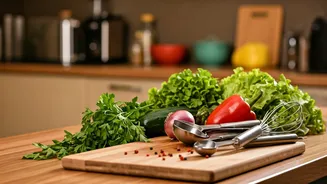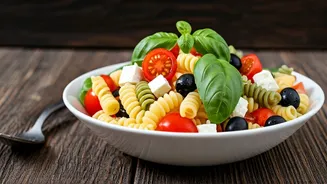Perfecting Vegetable Steaming
Steaming vegetables in the microwave is a simple yet effective way to retain their nutrients and flavors. Place your chopped vegetables in a microwave-safe
bowl with a splash of water, cover, and cook on high for a few minutes. The exact time will vary depending on the vegetable and your microwave's power, so start with short intervals and check for doneness. This method is especially great for broccoli, carrots, and green beans. By steaming them in the microwave, you not only save time but also ensure your vegetables remain tender-crisp and retain their vibrant colors. This method is healthier, as it requires little to no additional fats, and the natural flavors shine through. Experiment with different vegetables and cooking times to find your perfect balance. It is a quick, easy, and healthy way to prepare vegetables.
Reviving Stale Bread
Stale bread can be easily revived in the microwave, saving you from food waste. Simply sprinkle the bread with a little water, then microwave it for about 10-20 seconds. The water creates steam that rehydrates the bread, making it soft and edible again. You can also wrap the bread in a damp paper towel before microwaving for a more evenly moist result. This method works well for various types of bread, from loaves to rolls. It is essential to avoid over-microwaving, as this can make the bread tough. Start with a shorter time and add more as needed. You can then use the rehydrated bread in sandwiches, toast, or alongside meals. This quick trick is a great way to enjoy your bread without wasting food.
Melting Chocolate Easily
Melting chocolate in the microwave is incredibly easy, but it requires a bit of care to prevent burning. Place your chocolate pieces in a microwave-safe bowl. Microwave in short 15-20 second intervals, stirring well between each interval. The microwave power settings can affect the melting process. Stirring is crucial to distribute the heat evenly and to prevent the chocolate from seizing. Continue this process until the chocolate is smooth and completely melted. Be cautious and watch closely to avoid overheating; burnt chocolate has a bitter taste. This method is perfect for melting chocolate for desserts, making chocolate sauces, or dipping fruits. With a little practice, you can get perfect melted chocolate every time.
Microwaving Citrus for Juicing
Getting the most juice out of citrus fruits like lemons and oranges can be enhanced with the microwave. Simply microwave the fruit for about 20-30 seconds. This process slightly softens the fruit and loosens the membranes, making it easier to extract juice. After microwaving, roll the fruit on a countertop to further release the juices. Then, cut it and juice it as usual. You'll notice a significant increase in the amount of juice you get. This hack is particularly useful when juicing a large quantity of citrus fruits or if the fruits are slightly older and less juicy. Using the microwave helps you make the most of every piece of citrus, allowing you to maximize flavor and cut down on waste.
Cooking Garlic Easily
Microwaving garlic is a great way to speed up the cooking process. You can roast garlic in the microwave, which results in a milder, sweeter flavor. Place whole garlic cloves (unpeeled) in a microwave-safe dish. Add a small amount of olive oil and wrap the dish tightly with plastic wrap. Microwave on high for approximately 1-2 minutes, or until the garlic is tender. Allow it to cool slightly before handling. Roasted garlic is a versatile ingredient that can be used in sauces, dips, and as a spread. This method saves time compared to traditional oven roasting and preserves the garlic's natural sweetness. This easy method lets you enjoy the flavor of garlic without all the hassle.
Sanitizing Kitchen Sponges
Kitchen sponges are a haven for bacteria, but they can be sanitized quickly in the microwave. Wet the sponge, and then microwave it on high for about 1-2 minutes. This high heat kills many common bacteria and germs. Be careful when removing the sponge, as it will be hot. Allow it to cool before handling. This method is a quick way to sanitize sponges. It can extend their life and help maintain a cleaner kitchen. Although microwaving does not eliminate all bacteria, it can significantly reduce the bacterial load. You should replace your sponges regularly to maintain good kitchen hygiene. Regularly sanitizing your sponges will maintain a cleaner and safer kitchen environment.





